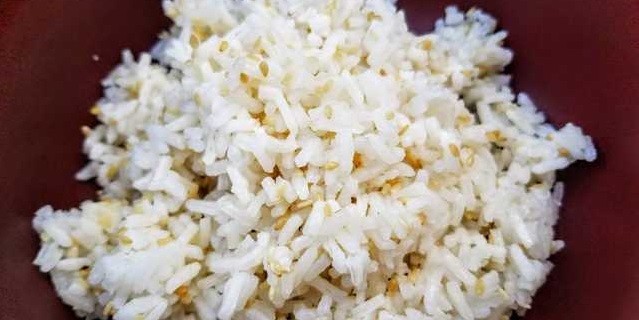
Scope
The Hindu Compliance System gives direction on cooking science which is compiled from Bhaga Shastra. Bhaga Shastra classifies foods into rajasik, tamasik and satvik types. Rajasik food makes one feel agitated, aggressive, lustful and egoistic. Tamasik food makes a person lazy, sleepy and depressed. Satvik food gives clarity to the person and brings him peace of mind leading to bhakti (devotion), tripti (fulfillment) and ananda (bliss).
Six types of tastes are described in the Bhaga Shastra – salt, sweet, sour, hot, bitter and pungent. It states that every meal should include all these tastes, so that the appetite is satisfied and the tongue is neutralized by all the tastes being together. As per the instructions in Bhaga Shastra, in order for all parts of the body, mind and brain to function properly, a balanced diet of all these tastes is a must.
Further, the purpose of having all six tastes is to balance the tridoshas in the body, namely vaata (acidic), pitta (alkaline) and kapha (phlegm). Every ingredient used in Hindu cooking is classified as per their dosha properties.
For thousands of years, Hindus have been cooking food which are organic, nature friendly and with numerous benefits. This standard will help organizations, businesses like hotels, restaurants etc. to cook the food as mentioned in Hindu Scriptures. This will also be applicable to the following:
— organizations seeking sustained success through the implementation of a standard parameters for amount or quantity;
— customers seeking confidence in an organization’s ability to consistently provide food products and services conforming to their requirements;
— organizations seeking confidence in their supply chain to ensure that the food product and service requirements are met;
— organizations performing conformity assessments against the requirements of cooking healthy and organic food
— providers of training, assessment or advice in quality control & management;
— developers of related standards.
Fundamental Concepts and Principles
Rice is typically rinsed before cooking to remove excess starch. Rice may be rinsed repeatedly until the rinse water is clear to improve the texture and taste. Rice may be soaked to decrease cooking time, conserve fuel, minimize exposure to high temperature, and reduce stickiness. Rice may be soaked for 30 minutes up to several hours. Rice is cooked by boiling or steaming, and absorbs water during cooking. Almost all rice recipes in the Bhaga Shastra indicate draining out starch after cooking, before further procedures of making a variety of tasty dishes is followed.
A basic preparation of rice is very simple and easy. However, the procedures to turn them into tasty dishes make it an elaborate affair, as the wide variety of rice dishes described in the recipes below will testify. When combined with milk, jaggery, and honey, it is used to make desserts.
Ingredients to be used for making krusaranna-sesame rice:
For Making Rice:
- Rice – 1/2 padi
- Water – 1½ padi
- Melted Ghee – 1½ palam
To Roast and Grind:
- De-skinned Sesame Seed – ⅛ padi
- Red Chilly – ¼ palam
- Crystal Salt – ½ palam
For Tempering:
- Ghee – 6 palam
- Red Chilly – ¼ palam
- Black Gram – ½ palam
- Mustard Seed – ¼ palam
- Curry Leaves – ¼ r.e
Method:
1. Heat the water and mix the rice and boil till it gets cooked properly. Drain the excess water. Put the rice on a clean stone surface.When the rice is still hot add the ghee and keep mixing with your hands.
2. Soak the sesame seed in water for a few minutes and drain the water completely. Place it on a clean surface and rub it with your hands till all the skin is removed.
3. Roast the sesame seed till it gets browned and then add red chilly.
4. Now take a mortar and pestle. Add the roasted sesame seed, chilly and crystal salt and powder it.
5. Add the powder to the rice mixed with ghee. Gently mix with your hands.
6. Take a brass vessel and heat the ghee till it gets medium heated. Add red chilly, mustard seeds, black gram and curry leaves and temper the dish as per the seasoning recipe.
7. Add the above tempered mixture to the rice and mix nicely and use.
References
The above standards have been taken into consideration from Kirana Agama, carya pada which is foremost amongst the śaiva-agama. At the time of publication, the edition indicated was valid. All the standards are subjected to revision considering that it is compliant to veda-āgama. All the interested parties are encouraged to investigate the possibility of applying the improvements in above standards.
तण्डुलार्धं तिलं ज्ञेयं कृसरान्नं प्रशस्यते|
taṇḍulārdhaṁ tilaṁ jñeyaṁ kṛsarānnaṁ praśasyate|
-Kirana Agama
Terminology and Definitions
- Padi
- Palam
- r.e.
Hindu Compliance Body
The Hindu compliance body was established under the executive order of The Supreme Pontiff of Hinduism, dated August 14, 2020, order number 10010, under the title Reviving the Hindu Compliance System and Body
to create, promote, spread and teach the standard procedures for all products and services that are in compliance Hindu Shastras.
Copyright
HCS has the copyright of all its publications. No part of these publications may be reproduced in any form without the prior permission in writing to HCS. This does not preclude the free use, in the course of implementing standard, of necessary details mentioned above. Enquiries related to copyrights to be addressed to KAILASA.
